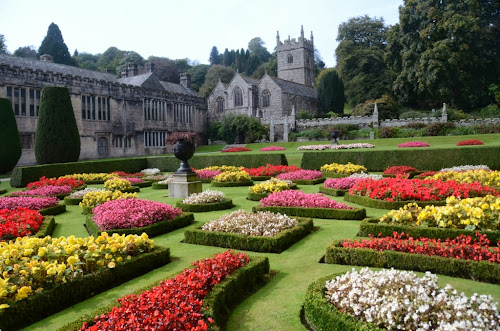That is what everyone says at each stop along the way. We awoke at Lynda and Steve's to thunder, much lightning, and heavy rain. Leaving midday we drove to Weymouth and caught the ferry to Guernsey in the Channel Islands. Gray and rainy we walked the streets in search of dinner. Mediocre food, not a single photo taken. One of those days that will not be remembered.
Today we journeyed on the first ferry of the morning to Sark. Sark is a very small but unique island that does not allow any cars. When you visit, your options are walking, cycling, or riding in a horse drawn carriage. With a cruise ship and tour buses in town Mike and I immediately headed for the remote. Actually there are two islands, Sark and Little Sark, joined by a narrow causeway with extremely steep drops on either side. We walked to the furthest point of Little Sark to explore the cliffs and find the "Venus Pool". After scrambling around in all the wrong places and asking for directional help another couple scrabbling around nearby, we found the location after the tide has risen and the pool had disappeared to become part of the incoming sea. However, we did manage to complete our mountain goat training for this trip.
After our epic climbing escapades, we stopped at La Sablonnerie to be spoiled for lunch in their garden by a whole battalion of waiters and waitresses dressed to the nines in formal black and white. It would be difficult to recall how many staff were involved in serving us our reasonably simple lunches of crab and smoked salmon salads, but the combination of pampering, ambience, good food, and a lengthy interlude of sunshine was an enormous contrast with our initial disappointment on arrival in Guernsey.
Enchanting is the best word to describe La Seigneurie, the home of the ruling family originating in feudal times. The form of government has changed in the last decade but the title remains. Today the gardens and much of the property is open for tourists although the house is private. Amazing gardens seem to continually appear during this trip. These gardens are walled in brick with stair stepped square plots surrounded with walkways. Even this late in the season there are masses of color. Two small fountains hide in the front of the garden surrounded with lattice walls. Behind the house is the largest, most impressive dovecote I ever expect to see. Traditionally, only this family is allowed to house doves on the island.
As we walked by the church we were attracted by the sound of voices joined in song. Outside the church were animals and owners. Today was the blessing of animals and we saw an enormous Clydesdale, two tiny ponies, a sheep, and dogs outside with a hint of many more inside.









































